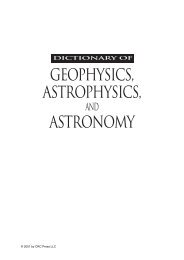tc dokuz eylül university institute of social sciences translation and ...
tc dokuz eylül university institute of social sciences translation and ...
tc dokuz eylül university institute of social sciences translation and ...
Create successful ePaper yourself
Turn your PDF publications into a flip-book with our unique Google optimized e-Paper software.
the acceptability <strong>and</strong> adequacy polar predominantly depends on the target readership<br />
the translator chooses (Pacek, 2002).<br />
Other than these valuable studies which had significant contributions to this<br />
study, there are no dissertations found on punning, wordplay, pun <strong>translation</strong> or any<br />
Alice or Lewis Carroll topics, nor are there articles related to these issues in Metis<br />
Çeviri Dergisi, 1987-1992. Therefore, this present study is thought to be one <strong>of</strong> the<br />
first examples on the issue <strong>of</strong> pun <strong>translation</strong> <strong>and</strong> to be the broadest study as well the<br />
corpus <strong>of</strong> eighteen books in seventy five years time span is considered.<br />
B. What are the strategies to translate puns?<br />
As much as every translator has her/his own strategy in translating a written<br />
or oral text, which is mostly constituted through experience, specific strategies might<br />
be determined for pun <strong>translation</strong> as a special literary form. Below are some general<br />
applications rather than 'strategies' since in most cases the translator chooses the best<br />
possibility rather than choosing one <strong>of</strong> the listed strategies.<br />
1. Pun-to-pun <strong>translation</strong>. When there is the same punning word, words or phrase<br />
found in the target language, this strategy is possible but it is the least frequent<br />
despite obviously being the most desirable. The translated pun in target language<br />
may be more or less different from the original pun in terms <strong>of</strong> formal structure,<br />
semantic structure, or textual function (Delabastita, 1996; 134).<br />
2. Pun-to-Related Rhetorical Device. This strategy aims to reproduce the effect <strong>of</strong><br />
the source-text pun by replacing it with some word-play related rhetorical device,<br />
e.g. repetition, alliteration, rhyme, referential vagueness, irony, paradox, e<strong>tc</strong><br />
(ibid.).<br />
3. Situational pun. In order to make a pun more obvious to the reader "they add<br />
another dimension to the verbal pun", which means within the content <strong>of</strong> the<br />
story the translator adds word pictures or a descriptive phrase to help give a<br />
better underst<strong>and</strong>ing <strong>of</strong> the pun (ibid.). A pun may also be adapted to the local<br />
setting to maintain the effect <strong>of</strong> it (Gottlieb, 1997; 210).<br />
4. Literal meaning. If both <strong>of</strong> the meanings cannot be translated, the translator may<br />
choose the literal meaning <strong>and</strong> disregard the second meaning, <strong>and</strong> thus lose the<br />
20
















